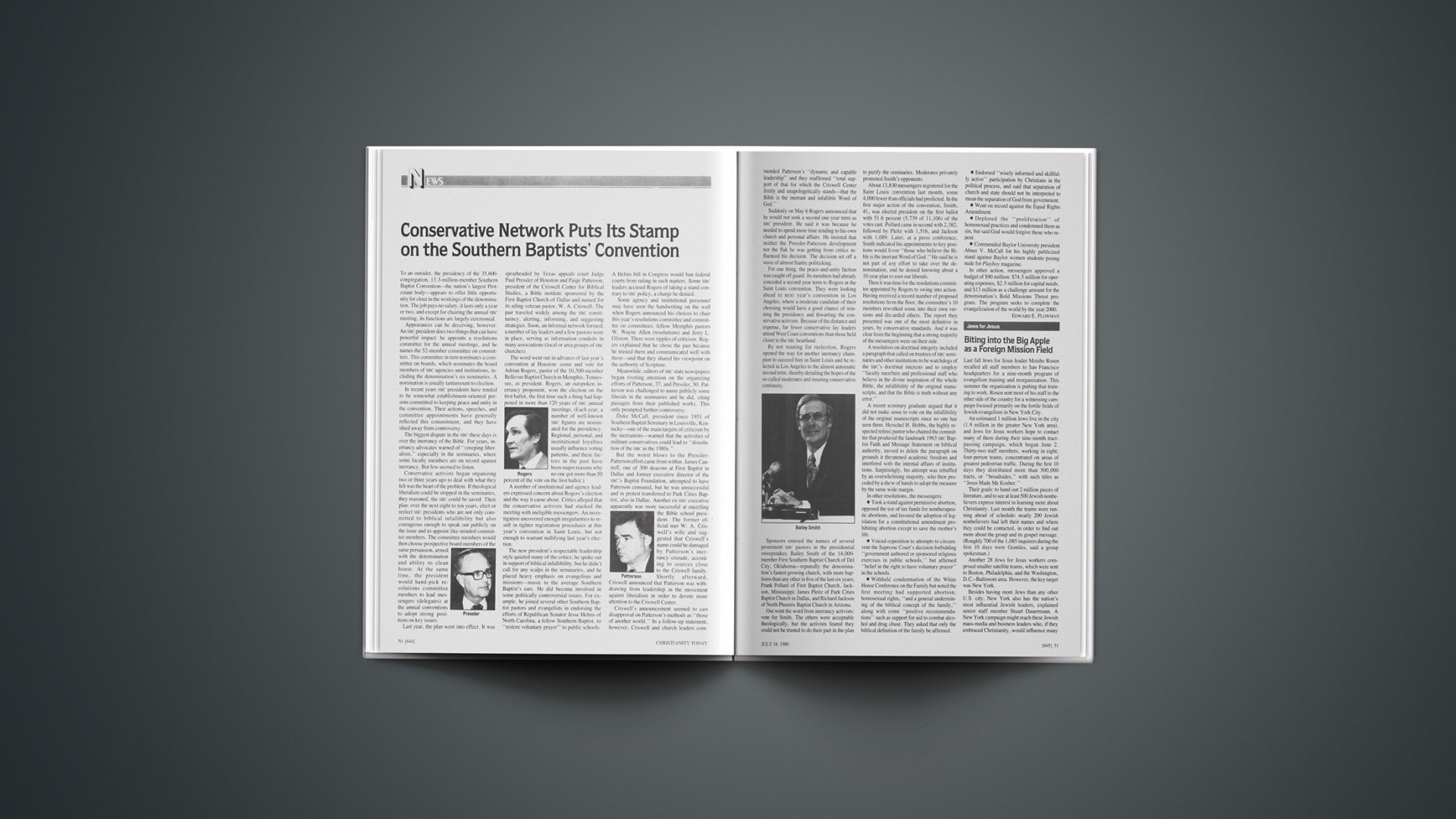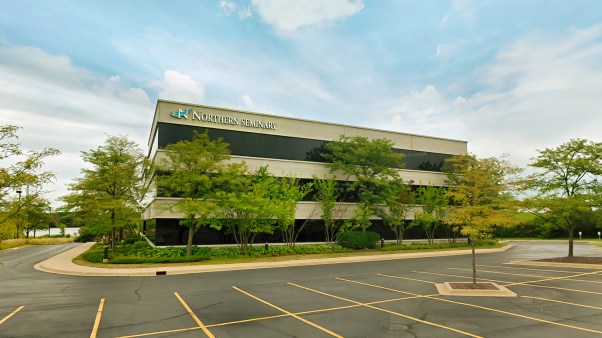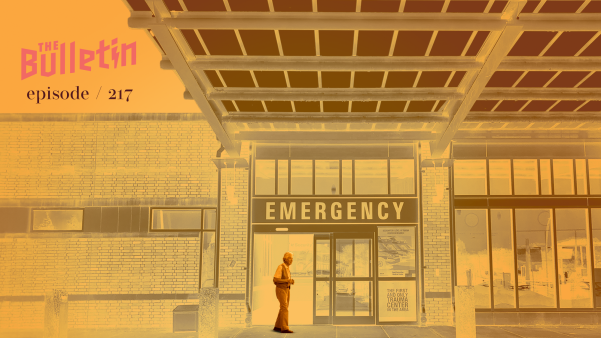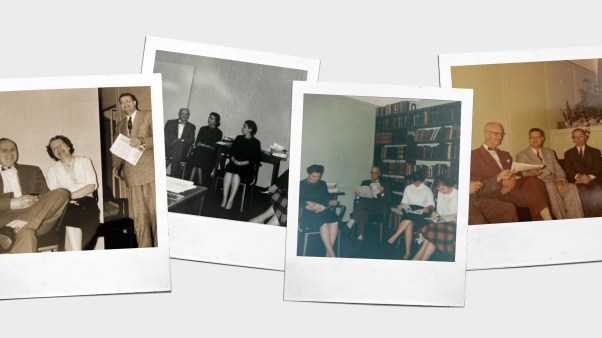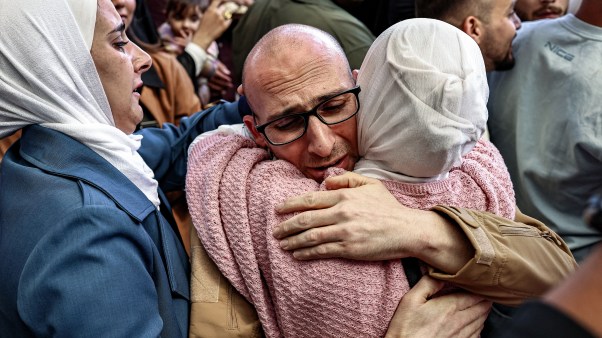To an outsider, the presidency of the 35,600-congregation, 13.3-million-member Southern Baptist Convention—the nation’s largest Protestant body—appears to offer little opportunity for clout in the workings of the denomination. The job pays no salary, it lasts only a year or two, and except for chairing the annual SBC meeting, its functions are largely ceremonial.
Appearances can be deceiving, however. An SBC president does two things that can have powerful impact: he appoints a resolutions committee for the annual meetings, and he names the 52-member committee on committees. This committee in turn nominates a committee on boards, which nominates the board members of SBC agencies and institutions, including the denomination’s six seminaries. A nomination is usually tantamount to election.
In recent years SBC presidents have tended to be somewhat establishment-oriented persons committed to keeping peace and unity in the convention. Their actions, speeches, and committee appointments have generally reflected this commitment, and they have shied away from controversy.
The biggest dispute in the SBC these days is over the inerrancy of the Bible. For years, inerrancy advocates warned of “creeping liberalism,” especially in the seminaries, where some faculty members are on record against inerrancy. But few seemed to listen.
Conservative activists began organizing two or three years ago to deal with what they felt was the heart of the problem. If theological liberalism could be stopped in the seminaries, they reasoned, the SBC could be saved. Their plan: over the next eight to ten years, elect or reelect SBC presidents who are not only committed to biblical infallibility but also courageous enough to speak out publicly on the issue and to appoint like-minded committee members. The committee members would then choose prospective board members of the same persuasion, armed with the determination and ability to clean house. At the same time, the president would hand-pick resolutions committee members to lead messengers (delegates) at the annual conventions to adopt strong positions on key issues.
Last year, the plan went into effect. It was spearheaded by Texas appeals court Judge Paul Pressler of Houston and Paige Patterson, president of the Criswell Center for Biblical Studies, a Bible institute sponsored by the First Baptist Church of Dallas and named for its ailing veteran pastor, W. A. Criswell. The pair traveled widely among the SBC constituency, alerting, informing, and suggesting strategies. Soon, an informal network formed; a number of lay leaders and a few pastors were in place, serving as information conduits in many associations (local or area groups of SBC churches).
The word went out in advance of last year’s convention at Houston: come and vote for Adrian Rogers, pastor of the 10,500-member Bellevue Baptist Church in Memphis, Tennessee, as president. Rogers, an outspoken inerrancy proponent, won the election on the first ballot, the first time such a thing had happened in more than 120 years of SBC annual meetings. (Each year, a number of well-known SBC figures are nominated for the presidency. Regional, personal, and institutional loyalties usually influence voting patterns, and these factors in the past have been major reasons why Rogers no one got more than 50 percent of the vote on the first ballot.)
A number of institutional and agency leaders expressed concern about Rogers’s election and the way it came about. Critics alleged that the conservative activists had stacked the meeting with ineligible messengers. An investigation uncovered enough irregularities to result in tighter registration procedures at this year’s convention in Saint Louis, but not enough to warrant nullifying last year’s election.
The new president’s respectable leadership style quieted many of the critics; he spoke out in support of biblical infallibility, but he didn’t call for any scalps in the seminaries, and he placed heavy emphasis on evangelism and missions—music to the average Southern Baptist’s ears. He did become involved in some politically controversial issues. For example, he joined several other Southern Baptist pastors and evangelists in endorsing the efforts of Republican Senator Jesse Helms of North Carolina, a fellow Southern Baptist, to “restore voluntary prayer” to public schools. A Helms bill in Congress would ban federal courts from ruling in such matters. Some SBC leaders accused Rogers of taking a stand contrary to SBC policy, a charge he denied.
Some agency and institutional personnel may have seen the handwriting on the wall when Rogers announced his choices to chair this year’s resolutions committee and committee on committees: fellow Memphis pastors W. Wayne Allen (resolutions) and Jerry L. Glisson. There were ripples of criticism. Rogers explained that he chose the pair because he trusted them and communicated well with them—and that they shared his viewpoint on the authority of Scripture.
Meanwhile, editors of SBC state newspapers began riveting attention on the organizing efforts of Patterson, 37, and Pressler, 50. Patterson was challenged to name publicly some liberals in the seminaries and he did, citing passages from their published works. This only prompted further controversy.
Duke McCall, president since 1951 of Southern Baptist Seminary in Louisville, Kentucky—one of the main targets of criticism by the inerrantists—warned that the activities of militant conservatives could lead to “dissolution of the SBC in the 1980s.”
But the worst blows to the Pressler-Patterson effort came from within. James Cantrell, one of 300 deacons at First Baptist in Dallas and former executive director of the SBC’s Baptist Foundation, attempted to have Patterson censured, but he was unsuccessful and in protest transferred to Park Cities Baptist, also in Dallas. Another ex-SBC executive apparently was more successful at muzzling the Bible school president. The former official met W. A. Criswell’s wife and suggested that Criswell’s name could be damaged by Patterson’s inerrancy crusade, according to sources close to the Criswell family. Shortly afterward, Criswell announced that Patterson was withdrawing from leadership in the movement against liberalism in order to devote more attention to the Criswell Center.
Criswell’s announcement seemed to cast disapproval on Patterson’s methods as “those of another world.” In a follow-up statement, however. Criswell and church leaders commended Patterson’s “dynamic and capable leadership” and they reaffirmed “total support of that for which the Criswell Center firmly and unapologetically stands—that the Bible is the inerrant and infallible Word of God.”
Suddenly on May 6 Rogers announced that he would not seek a second one-year term as SBC president. He said it was because he needed to spend more time tending to his own church and personal affairs. He insisted that neither the Pressler-Patterson development nor the flak he was getting from critics influenced his decision. The decision set off a wave of almost frantic politicking.
For one thing, the peace-and-unity faction was caught off guard. Its members had already conceded a second-year term to Rogers at the Saint Louis convention. They were looking ahead to next year’s convention in Los Angeles, where a moderate candidate of their choosing would have a good chance of winning the presidency and thwarting the conservative activists. Because of the distance and expense, far fewer conservative lay leaders attend West Coast conventions than those held closer to the SBC heartland.
By not running for reelection, Rogers opened the way for another inerrancy champion to succeed him in Saint Louis and be relected in Los Angeles to the almost automatic second term, thereby derailing the hopes of the so-called moderates and insuring conservative continuity.
Sponsors entered the names of several prominent SBC pastors in the presidential sweepstakes: Bailey Smith of the 14,000-member First Southern Baptist Church of Del City, Oklahoma—reputedly the denomination’s fastest growing church, with more baptisms than any other in five of the last six years; Frank Pollard of First Baptist Church, Jackson, Mississippi; James Pleitz of Park Cities Baptist Church in Dallas, and Richard Jackson of North Phoenix Baptist Church in Arizona.
Out went the word from inerrancy activists: vote for Smith. The others were acceptable theologically, but the activists feared they could not be trusted to do their part in the plan to purify the seminaries. Moderates privately promoted Smith’s opponents.
About 13,830 messengers registered for the Saint Louis convention last month, some 4,000 fewer than officials had predicted. In the first major action of the convention, Smith, 41, was elected president on the first ballot with 51.6 percent (5,739 of 11,106) of the votes cast. Pollard came in second with 2,382, followed by Pleitz with 1,516, and Jackson with 1,089. Later, at a press conference, Smith indicated his appointments to key positions would favor “those who believe the Bible is the inerrant Word of God.” He said he is not part of any effort to take over the denomination, and he denied knowing about a 10-year plan to root out liberals.
Then it was time for the resolutions committee appointed by Rogers to swing into action. Having received a record number of proposed resolutions from the floor, the committee’s 10 members reworked some into their own versions and discarded others. The report they presented was one of the most definitive in years, by conservative standards. And it was clear from the beginning that a strong majority of the messengers were on their side.
A resolution on doctrinal integrity included a paragraph that called on trustees of SBC seminaries and other institutions to be watchdogs of the SBC’s doctrinal interests and to employ “faculty members and professional staff who believe in the divine inspiration of the whole Bible, the infallibility of the original manuscripts, and that the Bible is truth without any error.”
A recent seminary graduate argued that it did not make sense to vote on the infallibility of the original manuscripts since no one has seen them. Herschel H. Hobbs, the highly respected retired pastor who chaired the committee that produced the landmark 1963 SBC Baptist Faith and Message Statement on biblical authority, moved to delete the paragraph on grounds it threatened academic freedom and interfered with the internal affairs of institutions. Surprisingly, his attempt was rebuffed by an overwhelming majority, who then proceded by a show of hands to adopt the measure by the same wide margin.
In other resolutions, the messengers:
• Took a stand against permissive abortion, opposed the use of tax funds for nontherapeutic abortions, and favored the adoption of legislation for a constitutional amendment prohibiting abortion except to save the mother’s life.
• Voiced opposition to attempts to circumvent the Supreme Court’s decision forbidding “government authored or sponsored religious exercises in public schools,” but affirmed “belief in the right to have voluntary prayer” in the schools.
• Withheld condemnation of the White House Conference on the Family but noted the first meeting had supported abortion, homosexual rights, “and a general undermining of the biblical concept of the family,” along with some “positive recommendations” such as support for aid to combat alcohol and drug abuse. They asked that only the biblical definition of the family be affirmed.
• Endorsed “wisely informed and skillfully active” participation by Christians in the political process, and said that separation of church and state should not be interpreted to mean the separation of God from government.
• Went on record against the Equal Rights Amendment.
• Deplored the “proliferation” of homosexual practices and condemned them as sin, but said God would forgive those who repent.
• Commended Baylor University president Abner V. McCall for his highly publicized stand against Baylor women students posing nude for Playboy magazine.
In other action, messengers approved a budget of $90 million: $74.5 million for operating expenses, $2.5 million for capital needs, and $13 million as a challenge amount for the denomination’s Bold Missions Thrust program. The program seeks to complete the evangelization of the world by the year 2000.
Jews for Jesus
Biting into the Big Apple as a Foreign Mission Field
Last fall Jews for Jesus leader Moishe Rosen recalled all staff members to San Francisco headquarters for a nine-month program of evangelism training and reorganization. This summer the organization is putting that training to work. Rosen sent most of his staff to the other side of the country for a witnessing campaign focused primarily on the fertile fields of Jewish evangelism in New York City.
An estimated 1 million Jews live in the city (1.9 million in the greater New York area), and Jews for Jesus workers Hope to contact many of them during their nine-month tract-passing campaign, which began June 2. Thirty-two staff members, working in eight, four-person teams, concentrated on areas of greatest pedestrian traffic. During the first 10 days they distributed more than 500,000 tracts, or “broadsides,” with such titles as “Jesus Made Me Kosher.”
Their goals: to hand out 2 million pieces of literature, and to see at least 500 Jewish nonbelievers express interest in learning more about Christianity. Last month the teams were running ahead of schedule: nearly 200 Jewish nonbelievers had left their names and where they could be contacted, in order to find out more about the group and its gospel message. (Roughly 700 of the 1,085 inquirers during the first 10 days were Gentiles, said a group spokesman.)
Another 28 Jews for Jesus workers comprised smaller satellite teams, which were sent to Boston, Philadelphia, and the Washington, D.C.-Baltimore area. However, the key target was New York.
Besides having more Jews than any other U.S. city, New York also has the nation’s most influential Jewish leaders, explained senior staff member Stuart Dauermann. A New York campaign might reach these Jewish mass-media and business leaders who, if they embraced Christianity, would influence many other Jews across the nation, said Dauermann. A New York City native and son of Orthodox Jewish parents, he became a Christian during an informal Bible study in a college cafeteria.
The organization’s street evangelists scheduled long days in New York. They distributed materials in certain predominantly Jewish neighborhoods (but no Orthodox ghettos), while concentrating primarily on train and subway stations. They hit the streets during rush hours, 7 to 9 A.M., 4 to 6 P.M., and 7:30 to 9:30 P.M., as well as during the 11 to 1:30 P.M. lunch hour.
Granting an interview during the 2 to 4 P.M. slot, which the foot-weary evangelists usually set aside for naps, Dauermann was happy that “things were happening.” Five Jewish persons so far had prayed to receive Christ. Believers and inquirers would be channeled into follow-up Bible studies and evangelical churches. At least 20 staff members plan to remain in New York City after the campaign ends to follow through on the work already begun.
There has been no organized opposition from New York’s Jewish community, although the evangelistic organization was warned about the distribution of “Jews for Jesus is just another cult” bumper stickers, said Dauermann. As usual, he said, reaction by Jews to the evangelists varied from friendly curiosity to “you ought to be ashamed of yourselves.”
Urban Ministries
How Do You Get Them Off the Farm?
The corn grows faster than the population in rural areas where many Wesleyan-oriented colleges are located. The closest thing to a housing project in places like Greenville, Illinois. and Spring Arbor, Michigan, is the college dormitory and the tallest building might be the local grain elevator.
As such, on-the-scene training in urban ministry has been hard to come by. So, to facilitate this kind of educational experience, eight Wesleyan-oriented colleges and seminaries have joined with Chicago’s Olive Branch Mission to form the Wesleyan Urban Coalition (WUC). Under the arrangement, which begins this fall, students from participating schools will spend a semester living at the mission, where they will receive academic and practical training in urban ministry. (The 100-year-old mission is Chicago’s oldest, and located in the heart of the West Madison Street skid row district. It is an official social agency of the Free Methodist Church.)
Well-known author and Free Methodist leader Howard Snyder, a member of the Olive Branch board of directors, has been appointed director of the WUC. This month he leaves Winona Lake, Indiana, for a new home—and adjustment to city life—in Chicago.
In addition to providing a structure in which students gain urban exposure, the WUC program will allow the mission to extend its ministry beyond the skid row alcoholic to other human needs in Chicago. Among the facts cited by the WUC study committee were:
• Chicago slums have an infant mortality rate four times higher than the national average.
• The death rate is 25 times higher and life expectancy is 10 years shorter than in surrounding suburbs.
• 40 percent of all Chicago public school students are on welfare.
• The 1977 graduating class of one Chicago high school had an average fourth grade reading level.
These sobering facts prompted Charles Cooper, pastor of the mission, to say: “We trust students will embrace these areas of need; that they will make statistics into people; people into persons; and persons into individual creations of God. The conditions of city life today are reason to come and learn and minister, rather than reasons to run.”
Chicago already has one urban ministries center, but it is geared for seminarians: the Seminary Consortium for Urban Pastoral Eduction, with eight midwestern seminaries participating. However, the new WUC program is designed primarily for undergraduates. Those Wesleyan-oriented schools committed to the WUC as of last month were Anderson (Indiana) College and School of Theology, Bethel (Indiana) College, Greenville (Illinois) College, Marion (Indiana) College and Graduate School, Spring Arbor (Michigan) College, and Taylor (Indiana) University. Several others, such as Olivet Nazarene College, Asbury College and Seminary, and Jordan College, had expressed interest.
VICTOR PARACHIN
Victim or Perpetrator?
Minister LaRose Vanishes for the Second Time
Eunice La Rose stirred from her sleep June 10 just long enough to see her husband prepare to leave for work at the church next door.
But it was only 5:30 A.M.
Don LaRose explained he was a little behind and wanted to catch up before the day began. He would see her later. She turned over and went back to sleep.
That was the last she saw of him. Two hours later. Rod Post, assistant pastor at the Hessville Baptist Church in Hammond, Indiana, called Eunice to see if her husband was at home. He and Pastor LaRose were to have their regular breakfast meeting together.
Post had gone to the church and found the door unlocked, but LaRose was nowhere around. He then had driven to the restaurant, thinking the pastor had gone on ahead. But LaRose wasn’t there either. The waitress said she hadn’t seen him.
By now, the worst was suspected: Don LaRose was missing—perhaps kidnapped—again. For Eunice LaRose and her two teenage daughters it was the beginning of a nightmare relived.
LaRose last disappeared in November 1975, while pastor of a Baptist church in Maine, New York. At the time, he was reported “kidnapped” by members of a Satanist group wishing to silence his preaching about the devil. Before he vanished, he had received numerous threatening phone calls and letters.
Because of the bizarre nature of the case, his disappearance was national news.
A detective agency hired by the former church, however, soon concluded that the preacher’s disappearance was a hoax. Not everyone at the church accepted that explanation—least of all his wife. But after a few weeks LaRose was dismissed from his pastorate in absentia. Eunice and the children moved out of the parsonage.
LaRose was found three months later at a Skid Row mission in Minneapolis by a man who recognized the missing minister from a picture and accompanying story in CHRISTIANITY TODAY (Feb. 13, 1976). LaRose appeared to have a loss of memory and didn’t recognize his family when they were reunited.
He used the name “Bruce Williams,” and after spending some time under psychiatric care, he told his bizarre story under truth serum, relating how he was abducted at gunpoint by two men, who forced him into a van and drove him to Chicago.
During the trip, LaRose said, he was “brainwashed” by the two men, who used a device similar to one used for electric shock treatments. After his memory was erased, LaRose was “reprogrammed” with an entire new identity.
LaRose spent some time in a hospital. Slowly, he regained most of his memory and was well on his way to what seemed to be nearly a 100 percent recovery of his past, when he was hired by the Hessville Church.
His second sudden disappearance shook not only his immediate family but the entire congregation, which began a frantic search that same morning.
Roger Reeder, the church treasurer and a personal friend of the LaRoses, telephoned the Hammond police and the Federal Bureau of Investigation, which had been involved in the earlier case.
Reeder’s sister and one of LaRose’s daughters sped to O’Hare International Airport northwest of Chicago with a recent photo of LaRose. They recalled how his car was found near a local airport in New York after his previous disappearance. This time, however, the car was not missing. And the only lead, from a flight insurance salesperson, turned out to be false.
With few other leads, Hammond police could do little more than consider LaRose a “missing person.”
Reeder, however, did find a handwritten “will” made out by LaRose, dated April 30. On the back, the minister had kept a “diary” of recent new “threats” he had received from unknown persons, telling him to stop telling the story of his earlier disappearance.
Also on the list of “contacts” were notations indicating he had twice paid money to “Man No. 1” and “Man No. 2” to put a stop to the threats. This, too, was turned over to police.
By the end of the first week after his disappearance, neither his family nor the church had received any kind of ransom demand. In fact, neither has heard anything from or about Don LaRose.
“We’re just treating this as a missing person case,” said Detective Sergeant John Rataczak of the Hammond Police Department. “There is no evidence he has been abducted or is the victim of foul play.”
JACK HOUSTON
Minnesota
Schaeffer’s Shelter Away from the Swiss
Francis Schaeffer has made repeated trips to the Mayo Clinic in Rochester, Minnesota, in order to get chemotherapy treatments for the cancer that invaded his body some 20 months ago. Last month, he returned to Rochester, but to talk about applying Christian principles to areas of sickness within society.
Schaeffer, his wife Edith, and 15 staff members from the four L’Abri centers in Europe and America conducted a L’Abri conference in Rochester, and the eight-day gathering drew more than 1,200 registrants from 49 states and several countries.
The conference marked the twenty-fifth anniversary of the Schaeffers’ venture into the work in Switzerland that developed into “L’Abri,” which means shelter. “We did not plan a L’Abri, nor did we plan to write books or make films,” said Edith Schaeffer. “That’s just the way the Lord led us.”
The ministry has developed into three centers in Switzerland, Holland, and England, with a fourth soon to open in Southborough near Boston. At the conference, Schaeffer announced plans to purchase two neighboring homes in the Rochester area to open a fifth L’Abri center. The facility will not have residential facilities like the other L’Abris; it will, however, be the Schaeffers’ home when they are in America and will house many of the business functions of the organization.
Seeing itself doctrinally uniform with orthodox evangelicals, L’Abri Fellowship, however, prefers to propagate a “different mentality” about Christianity. It sets forth an intellectual argument for Christianity, designed to countermand modern liberal philosophies. It focuses on four areas: the authority of the Bible, the rationality of faith, the reality of the Fall, and the humanness of spirituality.
Ranald Macauley, Schaeffer’s son-in-law and director of the English center, characterized the contemporary evangelical church as having a “straitjacket mentality” and being caught up in legalism and conformity. He continued, though, by calling for more involvement by Christians in the communications media, politics, and education, foreseeing a “tremendous possibility” for the church.
Offering four lectures daily, repeated showings of the two Schaeffer films, How Should We Then Live? and Whatever Happened to the Human Race? plus discussion groups in the evening, the conference planners sought the spontaneity typical of the L’Abri classes at the center. They attempted to give “honest answers to honest questions.”
Schaeffer is taking a lesser role in the organization, but still is very much the leader of the fellowship. He frequently mingled with the conferees, displaying no outward signs of the cancer or side effects of its treatment. “His condition is good,” commented a medical spokesman and conference official, “and his spirit is noticeably better than it was at their last visit to Rochester in December. He is suffering from a recurring maglignant lymphoma that appeared in November, but he is responding well to the chemotherapy” that began this past spring. Although Schaeffer, at 68, openly talks about his condition, he does not predict his future. The Schaeffers do, however, plan to maintain their active schedule, which includes upcoming seminars in California and Hawaii.
PETER BUCKLES
TV Evangelists
Staying Humbard while Living Like a Rex
Several months ago evangelist Rex Humbard and his two sons each bought properties in an exclusive neighborhood near Palm Beach, Florida. They paid a total of $ 177,500 in cash down payments for a home and two condominiums having a total price tag of $650,000, the Cleveland Press reported last month in a two-part series.
Such revelations of spending often arouse the public’s suspicion, so Humbard was particularly upset by the Press’s handling of his comments in a way, he says, that implies financial hanky-panky. The Press reported Humbard as being unconcerned about what supporters and the public think of the purchases. “My people don’t give a hoot what I spend that money for,” he was quoted as saying in the article, which was carried nationwide by the wire services.
“The main implication was that we were using corporate money for personal gain, which is untrue,” said information officer Jim Dailey. “What he said was that ‘people don’t care what I spend my own money for,’ not the ministry’s money. And I think that [the false impression] is causing us no end of grief.”
According to Dailey (who said the Humbard organization has contemplated taking legal action against the newspaper but that “there hasn’t been any so far”), Humbard raised the down payment for his new $290,000 home by riling his Fort Lauderdale condominimum, and by drawing from his company retirement account. He would finance the balance “on a conventional mortgage just like you or I would,” said Dailey, in a telephone interview.
While the organization is based in Akron, Ohio, Dailey said Humbard lives most of the year in Florida out of regard for the health of his wife, Maude Aimee, who suffers from a heart condition. Dailey also said the Humbards have encountered security problems at their home in Akron, and that the 60-year-old evangelist chose the expensive community in Florida because it offered the protection of tight security to residents.
In a telephone interview, Press religion writer George Plagenz said he was unaware of Humbard’s complaints about being misrepresented. During the interview, said Plagenz, he had agreed with Humbard’s freedom of choice in spending his personal money. However, Plagenz said he had asked the evangelist, “Aren’t you concerned about the impression [expensive buying] … on the layman and the public?”
When the evangelist said he owned an expensive donated car, for instance, Plagenz said he asked, “What do people think about your driving a $12,000 Lincoln?” Plagenz said he told the evangelist that Scriptures seem to indicate that “if something offends somebody, don’t do it,” Plagenz, who coauthored the articles with a staff investigative reporter, said Humbard told him not to think that negative treatment by the Press would hurt his organization, since, in that event, “our people will go into their pockets and send even more money.”
Last fall, Humbard’s organization was $3.2 million in debt, and in a fund-raising letter Humbard warned of “facing the very death of this ministry.” Humbard later explained the cause of the deficit was costs for the July 4, 1979, broadcast of his “You Are Loved” prime-time television special on 205 stations nationwide. (His weekly Cathedral of Tomorrow services are broadcast over more than 650 North American TV stations, 700 radio stations, and in 62 foreign regions covering every continent.) Last fall’s debt was eliminated because 200,000 followers gave $20 each, the Press reported.
Earlier, his organization had rebounded from an even larger deficit. In 1973 Humbard and his Cathedral of Tomorrow were sued by the U.S. Securities and Exchange Commission and by the Ohio Department of Commerce for the alleged sale of $12.5 million in unregistered securities. The money had been raised to cover cathedral purchases of an Akron urban development project, Mackinac (Mich.) College, and several small businesses—all since sold—and for construction of a still-unfinished 500-foot concrete tower, which was to bear a revolving restaurant. In a court-arranged settlement, Humbard agreed to buy back all the securities, and received enough donations to do so.
Humbard never reveals his annual salary, because “he feels like what he makes is his business,” said information officer Dailey. Like everyone else in the organization, Dailey said, Humbard’s salary is set by an outside national consulting firm.
Theologian Schillebeeckx
Another Dutch Broadside at the Vatican Status Quo
The shortage of priests in the Roman Catholic church will be met as soon as the priestly office, as constituted by the early church, has been reinstated. That is the conclusion of Dutch theologian Edward Schillebeeckx in a recent article in Concilium magazine.
Schillebeeckx. 66, a professor of dogmatic theology and hermeneutics at the Roman Catholic University of Nijmegen in the Netherlands, says that each early church congregation nominated one of its own members as its priest, after which his ordination followed.
Schilleeckx argues that a shortage of priests would not occur under a return to this pattern since enough Christians already minister in each congregation—with some involved in teaching or other pastoral work. But so far these lay ministers are denied liturgical privileges for reasons that have nothing to do with the priestly office, Schillebeeckx says.
The Dutch press writes that Schillebeeckx, who was summoned to Rome last December for doctrinal questioning on his writings about the deity of Jesus, has become even more vulnerable as a result of this view.
The Dutch theologian contends that the church offices in the first five centuries emerged out of the commandment for the proclamation of the gospel, edification of the body, and the demand for church leadership. The Council of Chalcedon in A.D. 541 stated that a believer could only be ordained after he was nominated by a local church.
Schillebeeckx stresses that the priestly office did not emerge out of the celebration of the Eucharist, and that the basis for such can be found nowhere in Scripture. According to Schillebeeckx, the present view of the priesthood evolved under the influence of the Fourth Lateran Council, which in 1215 broke with the viewpoint of Chalcedon. The Council of Trent in 1562 ended completely the idea of a priest’s nomination by the congregation, he asserts, and adds that as a result the relationship between the local body of believers and the priestly office became blurred.
The Dutch theologian says that the Second Vatican Council returned in many aspects to theological views of the early church, but that it compromised on issues such as church offices.
Schillebecckx’s critics argue that in the early church selection by the local congregation was not the only criterion for ordination. The voice of the people was considerably limited, they say by regulations (the Constitutiones Apostolici) that stated the conditions candidates must meet. It was expected that the Dutch Conference of Bishops soon would discuss Schillebeeckx’s views.
LOEK KELLER

